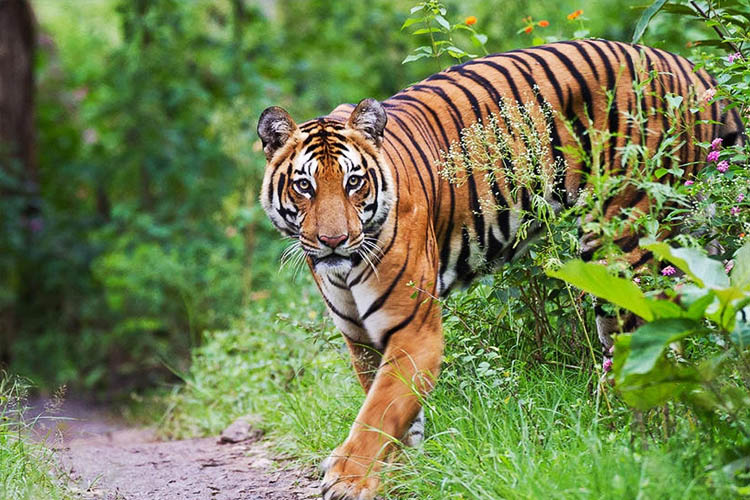Located in Mayurbhanj district, Simlipal is one of India’s finest tiger reserves and national parks, offering a rare combination of dense forests, majestic waterfalls, scenic valleys, and exotic wildlife. Spread over 2,750 sq. km, Simlipal is part of the UNESCO World Network of Biosphere Reserves and is a perfect destination for eco-tourism, wildlife photography, and jungle adventures.
1. Simlipal National Park and Tiger Reserve
Home to the Royal Bengal Tiger, Asiatic elephants, leopards, gaurs, and hundreds of bird species, this national park is one of India’s largest. The thick Sal forests, river valleys, and grassy meadows offer a thrilling experience for wildlife lovers and nature photographers.
2. Barehipani Waterfall
Cascading from a height of 399 meters, Barehipani is the highest waterfall in Odisha and the second-highest in India. Surrounded by dense forest, it’s one of the most stunning spots within Simlipal.
3. Joranda Waterfall
Another scenic gem inside the park, Joranda Falls plunges 150 meters straight down a cliff in a single drop. It’s a great picnic and photo spot, especially during and after the monsoon season.
4. Chahala Zone
This is the core safari zone in Simlipal and one of the best places to spot wild elephants, deer, peacocks, and if you’re lucky – even a tiger. The open grasslands and salt licks attract various animals, especially in the early morning or evening.
5. Nawana and Kusumbandha Valleys
Ideal for trekking and scenic drives, these valleys offer mesmerizing landscapes, rolling hills, tribal villages, and hidden water bodies. They reflect the unspoiled beauty of Simlipal’s interior regions.
6. Tribal Culture and Villages
Simlipal is home to several tribal communities, including the Santhal, Munda, and Ho tribes. Visitors can witness their traditional lifestyle, dances, and crafts while enjoying warm hospitality and locally prepared food.
7. Lulung
Located on the eastern edge of Simlipal, Lulung is a peaceful getaway spot with streamside cottages, trekking trails, and access to the forest. It is also a base for eco-tourism and adventure lovers.
8. Pithabata Gate – Entry to the Wild
Pithabata is one of the main entry points to Simlipal. Here you can obtain forest permits, guides, and safari vehicles. The journey from this point into the forest is filled with scenic charm.
9. Biodiversity and Conservation
Simlipal is home to over 1,000 species of flowering plants, 60 species of mammals, 300 species of birds, and 60 species of reptiles. It is also known for Indian Bison, pangolins, flying squirrels, and several species of orchids.
10. Eco-Cottages and Forest Rest Houses
Stay options include eco-friendly cottages at Barehipani, Jamuani, Gurguria, and Lulung, run by Odisha Forest Department. These are perfect for an off-grid forest experience with basic amenities and natural surroundings.
11. Best Time to Visit
The park remains open from November to mid-June, with the best wildlife sightings between December and April. Monsoons are beautiful but the park remains closed due to safety reasons.
12. How to Reach
-
By Road: Well connected from Baripada (30 km), Bhubaneswar (270 km), and Balasore (110 km)
-
By Rail: Nearest railway station – Baripada or Balasore
-
By Air: Nearest airport – Bhubaneswar or Kolkata
13. Safari & Permits
Jungle safaris require prior booking and permits from the Forest Department. Only limited vehicles are allowed per day, so advance planning is recommended.
14. Ideal for Wildlife, Nature, and Eco-Tourism
Simlipal is perfect for wildlife photographers, birdwatchers, solo travelers, and nature-loving families. It offers a raw, peaceful experience that brings you close to the wild.
15. Responsible Travel Tip
Follow forest rules, don’t feed or disturb wildlife, avoid plastic, and support local eco-tourism. Let’s preserve Simlipal’s natural heritage for future generations.





